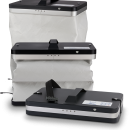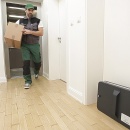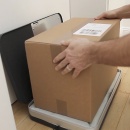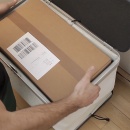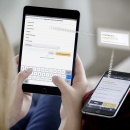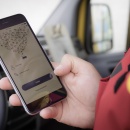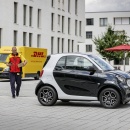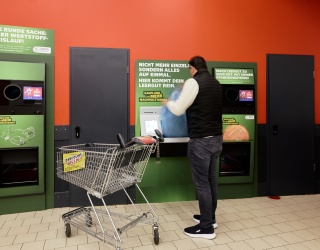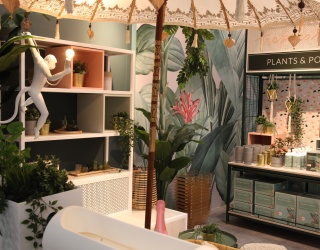Christmas is just around the corner and with it comes the annual gift buying. You would think it’s a great time for online retailers. Yet despite the great e-commerce growth in 2016, there is still one final nuisance for customers that many online retailers have so far neglected: the so-called “last mile“.
During the holiday season, delivery notifications are piling up in the mailbox, neighbors turn into human parcel lockers or your wanted item ends up at the pickup parcel shop that’s already closed of course. Delivery dissatisfaction is primarily a problem for retailers and not for logisticians.

Both inconvenient delivery times and a lack of delivery options quickly result in shoppers refraining from making a purchase online. A study conducted by delivery solution provider MetaPack (State of eCommerce Delivery Report 2016) discovered that 45 percent of interviewed persons cancel their online purchase due to dissatisfactory or non-existent delivery options. 38 percent would never buy from the respective online retailer again after a negative delivery experience.
Time factor impacts customer satisfaction
According to the EHI study “Shipping and return management in e-commerce 2016“, a majority of online retailers want to deliver within one day or even faster in the future. Even though the effort is enormous, it still pays off. “If a package arrives the same day, the time until the next purchase is made is reduced by 40 percent,“ says Nils Fischer, CEO of Liefery during this year’s Neocom. What’s more, the probability of customers returning the item decreases with faster shipping.
Like never before, speed impacts last mile logistics. Within the next three years, more than one-third of retailers (36 percent) want to increase delivery speed even more and offer same-day delivery. 12 percent could even envision offering delivery within one to two hours. Having said that, the time factor also means that buyers can choose the exact delivery time. Aside from the desired day, this also includes the exact delivery time. Mornings, as well as evening hours between 6 and 9 p.m., are the most popular time windows. Many customers either have their items delivered to their workplace or want to receive them at home after work.

Personal delivery options
One or two delivery options per store are definitely no longer enough to set yourself apart in the market. That’s why DHL, Parcellock or myrenzbox offer parcel delivery boxes. Similar to a mailbox system, they can be integrated either inside or outside the home. The delivery service opens the parcel delivery box with a key chip or via an app and places the shipment inside. Returns can also be made using these types of systems.
In addition, individual households across Germany can also use the so-called PackageButler, which was developed by Deutsche Telekom, the Hamburg-based company feldsechs, and DHL. The recipient leaves the foldable container directly outside their front door and anchors it between the door frame and door. Thanks to modern communications technology, only authorized persons and the delivery person have access to the container. The latter opens the container using a PIN, deposits the package and closes the lid. The PackageButler can essentially be operated by all delivery services and is also suited to make returns.
Advancing into the private sphere – DHL tests car trunk delivery
In a joint pilot project, DHL and car manufacturer Smart are currently testing whether and how cars can be used as mobile delivery addresses for package delivery. The solution is based on a smartphone app. To order online, the vehicle owner generates a one-time transaction authorization number (TAN). He or she enters it at the online store in the "c/o" box of the recipient’s address. The vehicle then only needs to be parked near the delivery address for the package delivery. At the same time, the delivery service receives information about the desired delivery location as well as one-time access to the vehicle within a certain timeframe via an app. This way, the service can place the ordered package into the car trunk and take back any returns at the same time. After closing the trunk, the access authorization expires immediately.
Humanless logistics – Hermes tests delivery robots
The fact that Amazon has wanted to use drones in its logistics process for quite some time now, is nothing new, yet a difficult undertaking from a legal perspective. Meanwhile, the courier service Hermes wants to use streets and sidewalks using a delivery robot designed by the Starship Technologies Company from Tallinn. Just like the PackageButler, this six-wheeled delivery robot can only be opened by the package’s recipient or the delivery service. It navigates on its own and moves at walking speed, avoids obstacles and recognizes when it can cross the street. This I made possible by special sensors and algorithms. During the current pilot test in Hamburg, Hermes uses the Starship robots to take shipments in the pickup parcel shop to the recipient. Usually, these types of deliveries need to be picked up in person. The robot does not replace conventional deliveries, where packages are directly delivered to the customer’s home by the sender. Oftentimes, the distances are simply too great to do this.
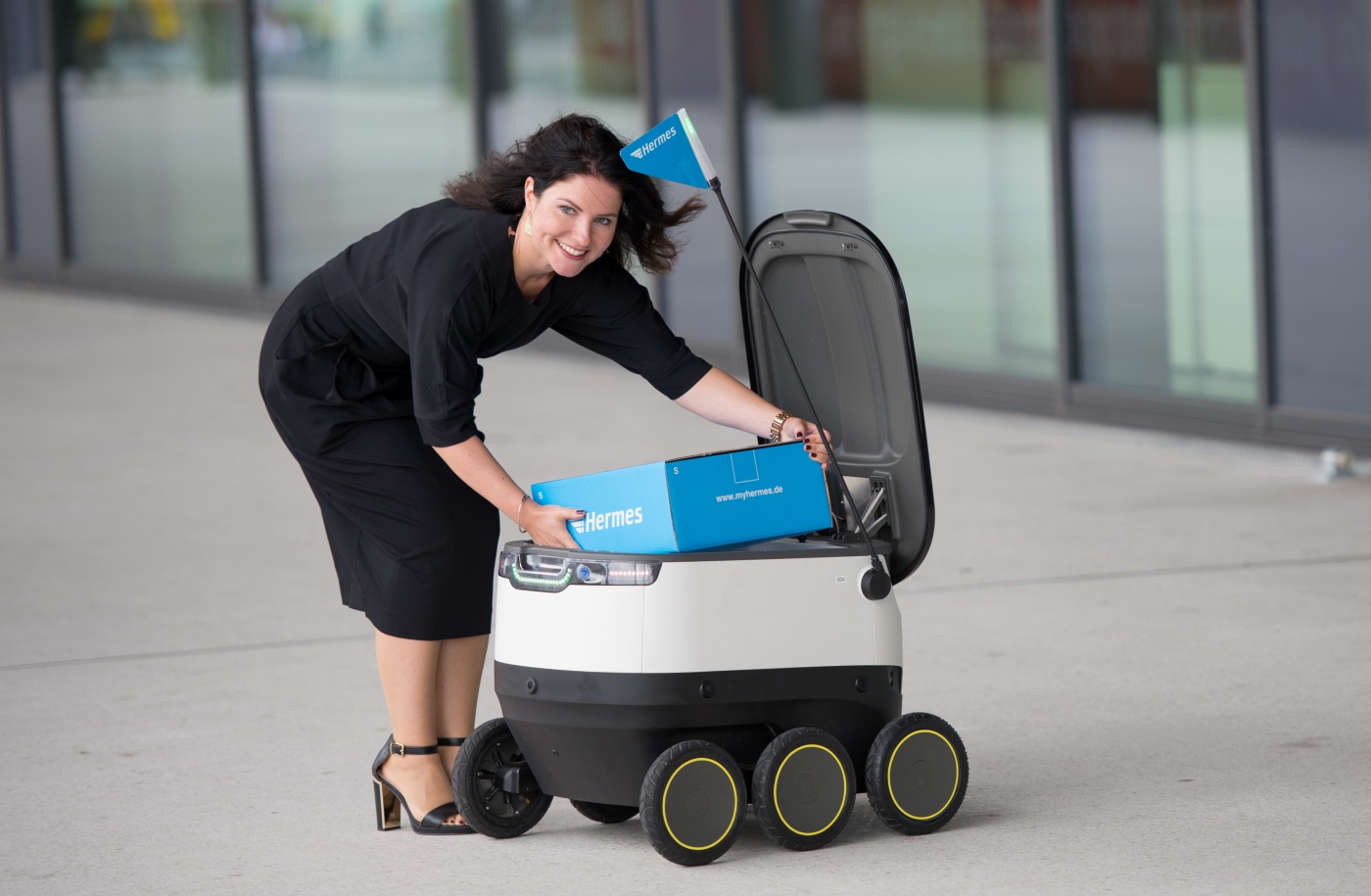
Deliveries need to be plannable, personalized and transparent
It’s clear that deliveries will increase in the future due to the continued growth of e-commerce. Meanwhile, online shoppers expect a personalized and plannable delivery. Customers want to be able to choose when, where and how a package will be delivered. Regardless of the delivery options an online retailer is able to offer, what’s important is for the customer to be able to choose based on his or her needs. Transparency will also continue to play a role in the future. The focus here is not just on delivery tracking or advance delivery notification via email or text. Logistics provider Liefery, for instance, also lets its customers know the name of the respective courier service and what the respective dispatcher looks like. In the future, building trust is going to create new challenges for the logistics sector if the private sphere continues to open up.


